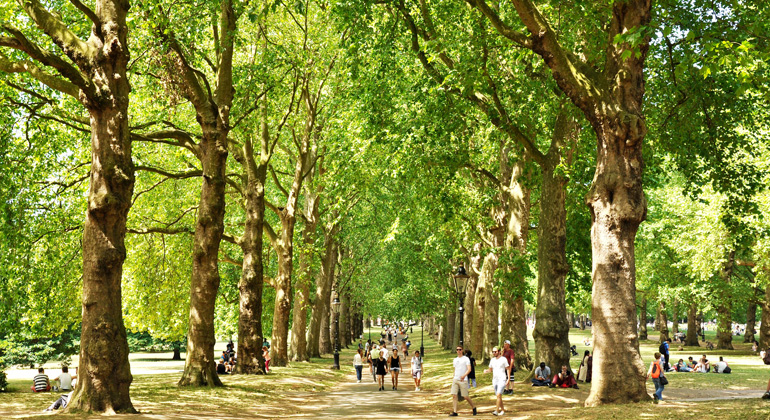Lack of Water is Key Stressor for Urban Trees
A recent study finds that urban trees can survive increased heat and insect pests fairly well – unless they are thirsty. Insufficient water not only harms trees, but allows other problems to have an outsized effect on trees in urban environments.
“We would see some vibrant urban trees covered in scale insects, but we’d also see other clearly stressed and struggling urban trees covered in scale insects,” says Emily Meineke, a postdoctoral researcher at Harvard and first author of a paper on the study. “We wanted to know what allowed some trees to deal with these pests so much more successfully.”
“This is important because trees need to grow in order to perform valuable ecosystem services, such as removing pollutants from the air and storing carbon,” says Steve Frank, an associate professor of entomology at North Carolina State University and co-author of the paper.
It’s extremely difficult to design a field study that addresses these questions about the role of various environmental variables, given all of the uncontrolled factors in an urban environment. So the researchers used both field data and controlled laboratory experiments.
The researchers collected detailed data on 40 urban willow oaks (Quercus phellos) over the course of two years. The data included temperature, how water-stressed the trees were, and the density of scale insects. Scale insects (Parthenolecanium species) are well-known tree pests.
But the researchers also conducted laboratory experiments using willow oak saplings. In these experiments, the researchers manipulated three variables while growing the willow oaks: temperature, water and the presence of scale insects.
The researchers found that higher temperatures could actually have a positive effect on tree growth, as long as the trees had adequate water. And scale insects had little or no adverse effect on the trees if the trees were not water stressed.
The researchers also found that water stress limited tree growth all by itself. But the presence of increased heat and/or scale insects, when combined with water stress, had a multiplier effect – curtailing growth far more than water stress or scale insects alone.
“This tells us that management strategies aimed at increasing tree hydration in cities may reduce the adverse effects of all three of these key stressors,” says Meineke, a former Ph.D. student in Frank’s lab. “And that is likely to become increasingly important as water availability, temperature and pest abundance are affected by further urbanization and climate change.”
“For example, urban planners could design urban landscapes that retain stormwater in vegetation; invest in hydration strategies, such as appropriate soil quality and soil volume; and plant drought-tolerant tree species and genotypes in the hottest parts of their cities,” Frank says.
“Moving forward, we’re very curious about the prevalence of water stress in urban trees globally – and whether this leads to similar problems regarding the impact of tree pests,” Meineke says. “If so, improved tree hydration could become a higher priority for urban forestry management.”
The paper, “Water availability drives urban tree growth responses to herbivory and warming,” is published in the Journal of Applied Ecology. The work was supported by the Department of the Interior’s Southeast Climate Science Center, under cooperative agreement numbers G11AC20471, G13AC00405 and G15AP00153 from the United States Geological Survey; by the U.S. Department of Agriculture’s National Institute of Food and Agriculture, under grant 2013-02476; and by the U.S. Environmental Protection Agency, under grant FP917482.








